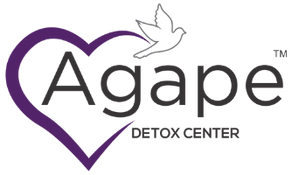Home » Alcoholism
Alcoholism
Table of Contents
ToggleUnderstanding Alcoholism and Addiction
Alcoholism is also referred to by its clinical term, alcohol use disorder (AUD). It is described as a medical condition characterized by an inability to stop or control alcohol use despite adverse social, occupational, or health consequences.
Alcohol use disorder is broken up into 3 main categories: mild, moderate, and severe. Each category has many different symptoms which can cause negative side effects. All three categories could most likely also benefit from a treatment program.

Why Do People Drink?
There are many risk factors that can increase alcohol abuse. Dependency can be developed over time, regardless of the reason for the first drink. Alcohol abuse can be triggered by using drinking as a coping mechanism for a difficult life event, for example.
While people may drink for many different reasons, there are a few common reasons:
Trauma
Trauma can manifest in many ways in our mental and physical health. This is why unresolved trauma is one of the most common reasons people use drinking alcohol as a coping mechanism.
Difficult Life Event
Not having the proper tools to handle a difficult life event, such as a divorce, a death, or even a job loss, can be a reason many people turn to alcohol. Drinking away the feelings can become a form of escapism to ease the grief they are feeling.
Socially
Drinking socially is widely accepted throughout our country as a group pastime. Some people feel they have a lack of connection with other people, so they drink to relieve the pressure they feel to engage in a social situation. Other times, in a social setting drinking, could be used more for fun and to join in with peers.
Mental Illness
Whether it is diagnosed or undiagnosed, mental illnesses such as depression, for example, can make drinking alcohol very tempting. The euphoria from the first couple of drinks can be enough to make the person forget they are depressed.
Negative Emotions
Dealing with negative emotions such as guilt or shame can lead a person to drink with the belief that once they are drunk, those feelings will go away. However, because alcohol is a depressant, it typically has rebound effects which make those feelings worse once they are sober again.
Different Types of Drinking/Drinking Patterns
Not only are there different levels of an alcohol use disorder, but there are also different types of drinking and drinking patterns. It’s important to know these patterns so someone can tell when a pattern becomes a drinking habit.
Social
Social drinkers are the most common type of drinkers. They are able to control their drinking with no issues. Social drinkers may drink at gatherings, parties, or other social situations, but not in excess. They may even drink at home alone, but not regularly. Social drinkers are also considered to be partaking in moderate drinking.
Binge
Binge drinkers are people who partake in excessive drinking. This means consuming 5 or more drinks on an occasion for men or 4 or more drinks on an occasion for women. Most people who binge drink do not have a severe alcohol use disorder but may show signs of one.
Heavy
Heavy drinking for men is considered consuming more than 4 drinks on any day or more than 14 drinks per week. For women, consuming more than 3 drinks on any day or more than 7 drinks per week. Heavy drinkers may have an alcohol use disorder and may show signs of alcohol dependence.
Addiction
Alcohol addiction includes a strong need or urges to use alcohol. People suffering from alcohol addiction may have problems controlling their drinking, continue to drink even when it causes problems, or have withdrawal symptoms when they rapidly decrease or stop drinking.
When Does Alcohol Abuse Turn into Alcoholism
Alcohol abuse and Alcoholism are very similar, but the difference can be found in the physical dependence on alcohol, and other criteria laid out in the Diagnostic and Statistical Manual of Mental Disorders, 5th Edition (DSM-5).
Some examples of the criteria that differentiate alcohol abuse and alcoholism (AUD) are:
- There is a persistent desire or unsuccessful efforts to cut down or control alcohol use.
- Craving, or a strong desire or urge to use alcohol.
- Continued alcohol use despite having persistent or recurrent social or interpersonal problems caused or exacerbated by the effects of alcohol.
- Recurrent alcohol use in situations in which it is physically hazardous
- Tolerance, as defined by either of the following: a need for markedly increased amounts of alcohol to achieve intoxication or desired effect, or a markedly diminished effect with continued use of the same amount of alcohol.
- Withdrawal, as manifested by either of the following: the characteristic withdrawal syndrome for alcohol , or alcohol (or a closely related substance, such as a benzodiazepine) is taken to relieve or avoid alcohol withdrawal symptoms.
Ready to get started?
Give us a call today. Our admissions coordinators will answer any questions you may have about our program and walk you through the admissions process.
Risk Factors for Alcoholism
Several things can increase a person’s risk of becoming addicted to a substance, even if their initial intent is only social or recreational use. There are 5 main risk factors for developing an alcohol use disorder. They are the duration of use, age of first use, environmental and social factors, heredity, and mental health.
Duration of Use
Duration of use refers to the length of time someone has been consistently drinking. The longer the duration, the higher the risk.
Age of First Use
Age may play a large role in forming an addiction. If the brain is exposed to alcohol at an early age, while crucial development is still taking place, it is easier for the alcohol to reroute the brain’s functioning. This makes them much more likely to depend on the substance, even if it doesn’t occur until later in life.
Environmental and Social Factors
Environmental factors like stress and exposure to violence can also increase the risk of developing an addiction, especially if the exposure happened in the developmental years of someone’s life. If someone lives in a violent or unpredictable environment, they may have a high risk of developing unhealthy coping mechanisms that could lead to an addiction.
Social factors such as peer pressure and social isolation can also contribute to addiction. If someone feels like they don’t fit in or are feeling lonely, they may be more likely to try drugs or alcohol.
Heredity
A family history, or heredity, is one of the most common risk factors for developing an addiction. This is because of the inherited genetics involving how the brain reacts to a substance. When someone’s parents enjoy the feeling of being high, their brain may interpret alcohol in the same way their parents did.
Mental Health
Pre-existing mental health conditions can also increase someone’s risk of addiction. If someone suffers from depression, anxiety, or even PTSD, they are more likely to try alcohol as a coping mechanism to deal with their feelings.
Warning Signs of Alcoholism
There are many signs that could be a warning someone is suffering from an alcohol use disorder. Because AUD is a very personal disease, the signs will be different for everyone, but there are a few commonalities to look for.
- Not participating in their favorite activities
- Sudden financial problems/not having enough money
- Becoming withdrawn from friends and family
- Lack of concern for appearance
- Extreme mood swings/Extreme highs and lows

Getting Treatment for Alcoholism
Getting help for an addiction is the only way to truly start the road to recovery. There are many different types of treatment that have been proven successful for many types of alcohol use disorders. Typically, starting a detox program, followed by inpatient treatment and then an aftercare plan will set someone on the right path to a long-lasting recovery from alcohol addiction.
Starting treatment for alcoholism can be done by calling us at Agape Detox Center. We have admissions coordinators waiting to answer any questions you may have, and help you to develop a plan to become the healthiest you can be.
- November 25, 2022
- Updated Date: May 24, 2024
Related services
Have any questions?

Stephanie Robilio, LCSW( Medical Reviewer )
Stephanie Robilio is an accomplished Clinical Director at Agape Behavioral Healthcare. With a Master of Social Work degree, LCSW license, and extensive training in Rapid Resolution Therapy under her belt, she brings a wealth of expertise to her role. Her unique combination of education and experience allows her to provide exceptional care to clients and lead her team with confidence. Stephanie’s joy comes from witnessing the moments when her patients creatively connect the dots and bravely move toward reclaiming their power. Her purpose is to help individuals understand their past so they can create a future full of hope, growth, and success. Stephanie attributes a large portion of her success to the supportive culture and strong sense of community fostered by the Agape team.



